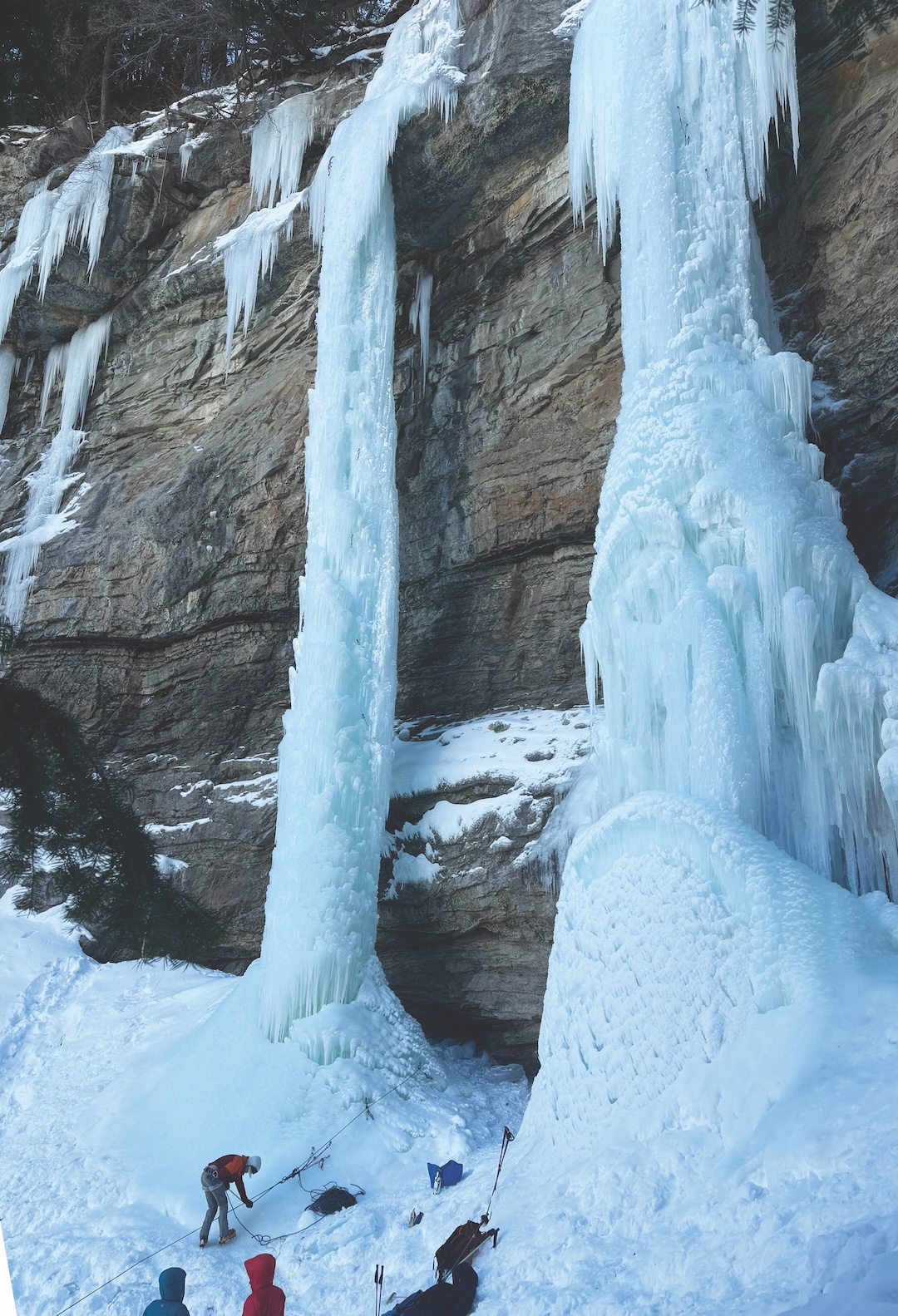Fall on Ice — Ice Screws Pulled Out
Colorado, Vail, Rigid Designator Amphitheater

On December 14, I was stoked to get on Vail’s newest pillar climb, Satan’s Spear (WI5), after watching a couple of good friends send it. While climbing, I noticed how wet and slushy the ice had become near the top. My tools swung through the ice until the shafts were half buried and my feet kicked straight through. I downclimbed to my last screw and tried to back it up with another, but the ice there was also garbage; I could pull my screws straight out after they were over halfway in. I debated backing off and going down.
Around the corner farther left, I saw what looked like colder, more solid ice and decided to go for it. As I made my way there, I again found myself fighting to find secure feet. They kept kicking through and cut out multiple times. I struggled to hang on to my tools. My feet cut one last time and I could no longer hang on. I fell, expecting to go about 20 feet into space.
Over the next couple of seconds, I saw the whole climb pass in front of my eyes. Two screws ripped out. Somewhere on the way down, I slammed into the pillar and smashed my arm. I fell about 80 feet before my belayer, Blake Hodges, caught me just off the deck. I felt like my arm had fallen off.
Not knowing the extent of my injuries, Blake immediately called paramedics. Every climber in the area seemed to have some level of medical training and came over to help. It was humbling to see everyone give up their day. Mountain rescue, paramedics, and a bunch of firefighters came up to help with evacuation. I spent a couple of nights in the hospital and had surgery on my left leg the next day.
ANALYSIS
I kept on climbing past what I knew was poor protection, “knowing” that I wouldn’t fall. I even downclimbed to my last screw and debated bailing. I went against my first best judgment, thinking I could push through. (Source: Pat Perry Johnson.)
*Editor’s Note: Ice climbing is far less forgiving than rock. While protection can be very good, the medium is variable, and in poor ice protection cannot be relied on to catch a fall. A go-for-it attitude is rewarded on most forms of free climbing on rock. As we see here, going for it on ice often has higher consequences.

